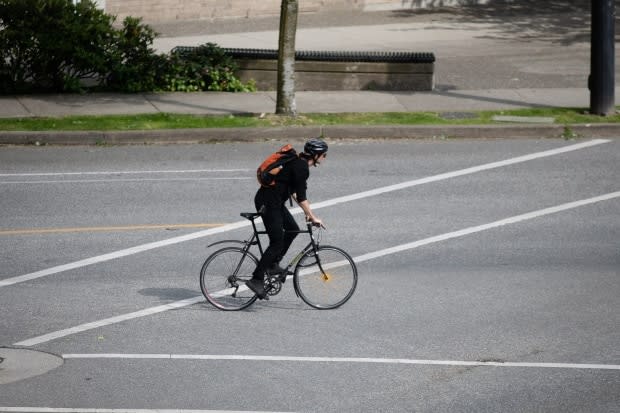Envisioning the future of transportation in a post-pandemic world
Lisa Kadonaga considers herself lucky. Her basement suite in Victoria is close enough to shops and services that she doesn't need to go far to get what she needs, and she's able to work from home.
"It's fairly convenient for me to be locked down," Kadonaga said. "I haven't had to go out very much."
Kadonaga doesn't own a car and, like many people, she's a bit hesitant to get on a bus because of the risk of contracting COVID-19.
For years, most major cities across British Columbia have tried to encourage people to use their cars less and walk, bike or take transit more. But the pandemic has changed how people get around, and how they feel about mass transportation.
The B.C. Ministry of Health says there have been no known cases of COVID-19 spread on public transit. But health officials also warn those who ride buses and trains should remain vigilant and wear a mask.
Despite the changes that COVID-19 has brought, some transportation planners remain confident that car use will continue to decrease in major cities.
Reducing exposure
Few experts can speak to the changes brought on by the pandemic like Anthony Perl, an urban studies professor at Simon Fraser University.
Perl was on a plane back to Vancouver from Singapore in March when the World Health Organization declared the pandemic. Six days later, he had a fever and the chills: he had caught COVID-19.
"That's why this question of exposure and how long you spend in a confined vehicle space with other people has been on my mind," Perl said.

Scientists still have a lot of questions about how COVID-19 spreads. But many agree that the risk of contagion increases with the amount of time spent indoors or in a confined space with others.
Perl thinks one solution to making transit safer is to make buses faster through measures like dedicated bus lanes, alternating stops and removing parking lanes.
"This is about increasing productivity and increasing the capacity of the transit system without increasing the cost," he said.
Affordable transportation
One of the main reasons why Perl doesn't think people will rush out to buy a new car is simple: they're expensive.
And with a downturn in the economy expected by some to last far beyond the pandemic, Perl doesn't think people are likely to blow thousands of dollars on a car anytime soon.
One form of transportation that is affordable is cycling.

Kay Teschke, professor emeritus at the University of British Columbia's School of Population and Public Health, says the pandemic has demonstrated a latent appreciation for cycling and walking.
"It's just exploded with people walking on the streets and people cycling on the streets," Teschke said.
"We do it because we like to do it. That's really an illustration of why it's such an important type of transport that we should support."
The biggest driver of cycling as a mode of transportation, she says, is infrastructure like separated bike lanes to make people feel safer. And Teschke says now is the time for cities to pounce on creating those opportunities, like they have in Milan, Paris and London.
Setting priorities
But even Teschke admits there are limitations to bikes.
Although e-bikes can help flatten hills and reduce distance, cycling is still not much of an option for people who have long-distance commutes because of housing affordability issues.
That's another reason why UBC professor Michael Brauer thinks public transit should stick around — many of the pandemic's front-line workers are in low-paying jobs.

Brauer is hopeful transit can remain safe while the pandemic continues, especially if fewer people are using it because they can work from home now and may continue to do so.
"So much of our infrastructure and our development patterns have been focused around transit," he said. "I'm still remaining optimistic about that."


